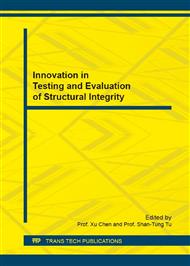p.51
p.57
p.62
p.67
p.72
p.77
p.83
p.88
p.92
Mechanical Behavior and Fatigue Performance of Carburized Steel Specimens
Abstract:
Carburization is popular in design and fabrication of mechanical parts, such as gears, to improve fatigue performance. However, it is still open how to characterize the mechanical property of carburized steel and to quantify effects of the carburization to fatigue life of carburized parts. In the present paper four types of specimens differently treated and carburized are experimentally investigated. The experiments confirm significant increments in hardness and yield stress due to carburization. The fracture strain of the carburized steel is significantly smaller than that of the base material. Although the fatigue performance of the carburized steel is slightly worse than the base material, the solid carburized specimen shows significantly longer fatigue life. The fatigue limit increases from ca. 300 MPa for the base material to 550 MPa for the tensile carburized specimens. Detailed measurements display that the carburized layer in a carburized specimen possesses high compressive residual stresses, which arises the fatigue performance of the carburized steel.
Info:
Periodical:
Pages:
72-76
Citation:
Online since:
September 2016
Authors:
Price:
Сopyright:
© 2017 Trans Tech Publications Ltd. All Rights Reserved
Share:
Citation:


